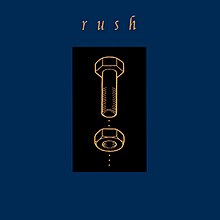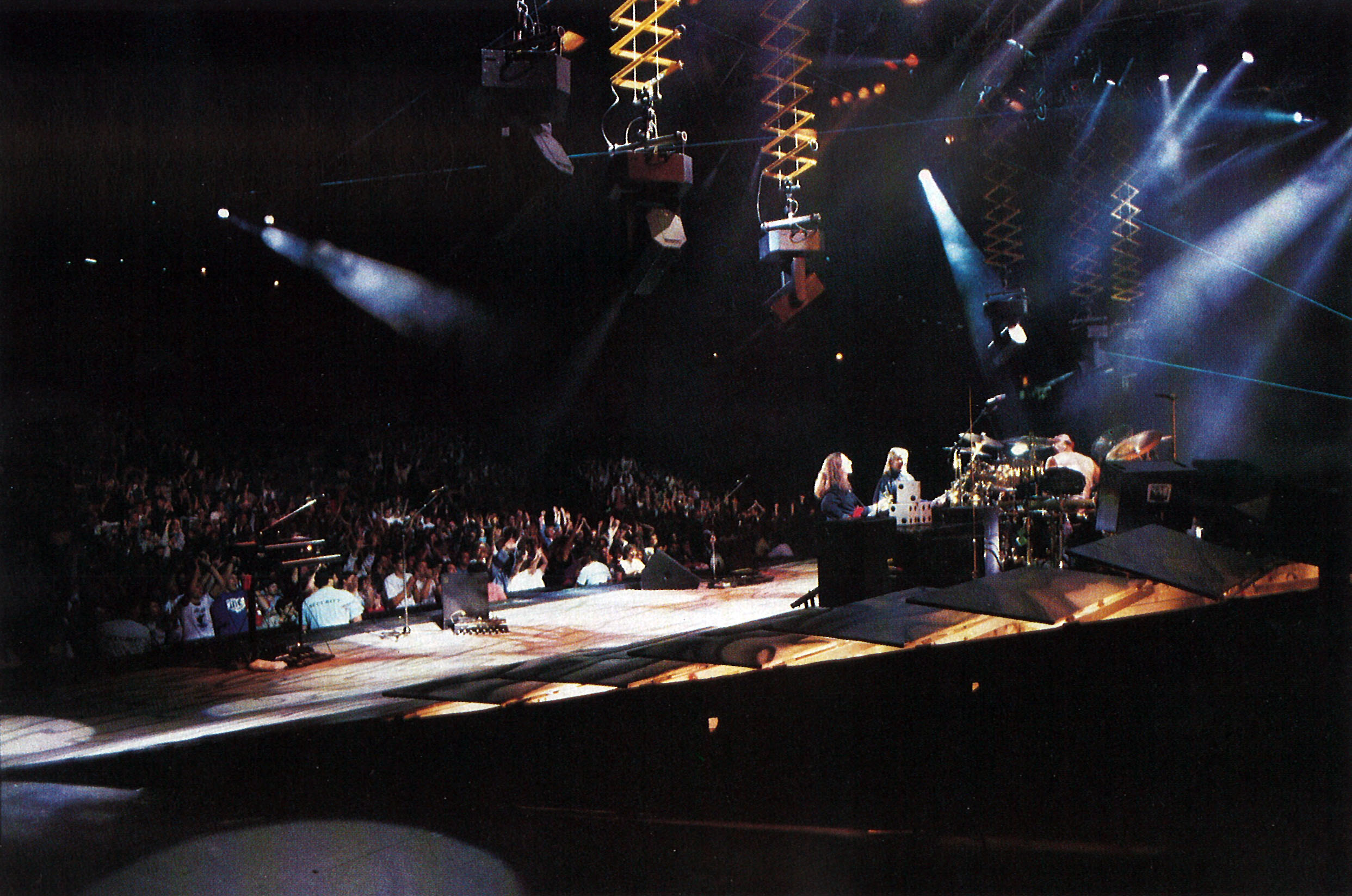
Approaching the Alien Shore
 The year is 1993. If the eighties were a big shake up in the music landscape for Rush, it was nothing compared to this section of the nineties. To give clarity, only two and a half weeks after the release of “Roll the Bones”, on September 24th, 1991, a little band in Seattle released their sophomore album: “Nevermind”. To say that this record was a shake up for the rock world would be a gross understatement, almost single handedly pushing the rock genre into a new era. With this shakeup, how would Rush be able to compete in this landscape of grunge and alternative rock? Would they fail to rise up to the challenge as many legacy acts succumb to at this time? The answer: ...a resounding hell to the no.
The year is 1993. If the eighties were a big shake up in the music landscape for Rush, it was nothing compared to this section of the nineties. To give clarity, only two and a half weeks after the release of “Roll the Bones”, on September 24th, 1991, a little band in Seattle released their sophomore album: “Nevermind”. To say that this record was a shake up for the rock world would be a gross understatement, almost single handedly pushing the rock genre into a new era. With this shakeup, how would Rush be able to compete in this landscape of grunge and alternative rock? Would they fail to rise up to the challenge as many legacy acts succumb to at this time? The answer: ...a resounding hell to the no.
To assist them in the project, the band entrusted
the help of producer Peter Collins, the man who worked with them in the past on “Power Windows” and “Hold Your Fire”. With this change, “Counterparts” production is meatier, heavier, less thin and muddy than the previous couple of releases. In addition, the performances are tighter and more complex this go around, and while it’s not as intricate as “Moving Pictures” or “Hemispheres”, it showcases the trio wanting to step outside the box, not be as safe or “predictable” (by Rush standards) as they were for the past couple of releases. Lee’s bass is more pronounced, expressive, and versatile, harkening back to his earlier years, Peart’s drums exhibit a more patient, somewhat tranquil but yet at the same time with an aggressive pounding that only he can elicit, and Lifeson...he’s Lifeson so he never showed signs of letting up, but was hampered by production limitations. What matters in the end are the songs, and in that department “Counterparts” exhibits a very solid return to form for the power trio, with some overlooked gems of their catalog that proved that the band could still deliver the goods.
The record opens with one of Rush’s best opening tracks, “Animate”. Lifeson’s guitar and Lee’s bass merge together seamlessly, creating a dream-like soundscape, most likely intentional since the band has gone on record to say that they were influenced by dream pop/shoegaze bands that were emerging around the 90s such as Lush. Lyrically it’s also dreamlike, with the lyrics evoking fantastical images of goddesses and demons, but not coming off as cheesy as earlier songs of theirs that went into similar territories. In addition, the opening track sets up the overall thematic element of the LP, which is the idea of duality or space, with a more direct and apt description being conflict. Conflict is the key lyrical idea running through a majority of the tracks, and it is not a pleasant discussion. It’s not as dark and claustrophobic as “Grace Under Pressure”, but given the rock scene and larger music landscape “Counterparts” was brought into, it definitely is able to showcase Rush as being able to stand up to their contemporaries.

The second track, “Stick it Out”, exhibits a vicious, defiant atmosphere around itself. In today’s socio-political climate, the thematic content of this track has become more relevant than when it was initially released. The aggressive tone of the guitar chords conjure an image of rebellion, spitting out the poison that the elites shove down on the individuals below them. While it can be argued that Rush have issued this type of message in stronger tracks on previous records, it can’t be denied that this song was appropriate given the cultural shift of the nineties. Though thankfully, the song doesn’t lapse into try-hard territory, and it still comes off as a Rush song. This single proved to be successful, netting the band their first and only number one debut on the Billboard Album Rock Charts.

While the record does have a strong one-two punch, “Counterparts” runs into slightly similar problems that “Roll the Bones” experience. A lot of the songs' lyrics feel as if they are retreading similar material that was expressed in far stronger songs. For example, “Alien Shore”, while showcasing lyrics that create a unique metaphor for the arbitrary boundaries that divide the human race, ultimately it sounds like an almost inferior version of the “Power Windows” track, “Territories”. That running problem pervades in the record’s second half, with the tracks not being as memorable as the first half, with a few exceptions such as “Everyday Glory”, the track that conclude the LP. The longer track listing leads to the band not being able to produce as many memorable moments as they could have with, though even the less memorable tracks still boast solid performances, interesting lyrical concepts, mainly around the ideas of duality and the never ending factor of contrast in the world at large, and a beefy production that at least gives weight to the songs that are presented.

 With those flaws acknowledge, one of the bright spots of this LP would have to be “Nobody’s Hero”, a hidden gem of the power trio’s song catalog. A heartbreaking ballad, the narrator chronicles himself being a witness or bystander to tragedies. The song opens with the main character discussing how he was friends with a man who is homosexual, and it appears as though the song will be uplifting, until the pre-chorus beings and it’s revealed that the man has passed away, and while it’s not explicitly mentioned it’s heavily implied that it’s from the AIDs virus. After the main chorus passes, the main character reveals how he knew a family whose daughter was brutally murdered, and describes how the victim’s family tries to “hold some faith...In the goodness of humanity.” An interesting note about these main incidents is that they are based on Peart’s real life experiences, specifically that he knew a man who was homosexual, and that there was a murder in his hometown, one that has been alleged to be a victim of infamous Canadian serial killer, Paul Bernardo. These real life, painful experiences help give the track a greater emotional weight, working in tandem with the choruses that talk about the ideal of being a “hero”. Their ability to save people, cure illnesses, and many other fantastical actions, but in reality are just that, fantastical, ideal, unreal.
With those flaws acknowledge, one of the bright spots of this LP would have to be “Nobody’s Hero”, a hidden gem of the power trio’s song catalog. A heartbreaking ballad, the narrator chronicles himself being a witness or bystander to tragedies. The song opens with the main character discussing how he was friends with a man who is homosexual, and it appears as though the song will be uplifting, until the pre-chorus beings and it’s revealed that the man has passed away, and while it’s not explicitly mentioned it’s heavily implied that it’s from the AIDs virus. After the main chorus passes, the main character reveals how he knew a family whose daughter was brutally murdered, and describes how the victim’s family tries to “hold some faith...In the goodness of humanity.” An interesting note about these main incidents is that they are based on Peart’s real life experiences, specifically that he knew a man who was homosexual, and that there was a murder in his hometown, one that has been alleged to be a victim of infamous Canadian serial killer, Paul Bernardo. These real life, painful experiences help give the track a greater emotional weight, working in tandem with the choruses that talk about the ideal of being a “hero”. Their ability to save people, cure illnesses, and many other fantastical actions, but in reality are just that, fantastical, ideal, unreal.Rush, once again, was able to prove that they were able to adjust to the changing tides of the music industry with this release. While not boasting many all time classics, this release proved to be a more than satisfactory LP, helping to keep this legacy band relevant in an age where many were losing their luster. All they had to do was keep up their momentum, and three years later they would follow up “Counterparts” with a rousing...mixed reaction.

Comments
Post a Comment